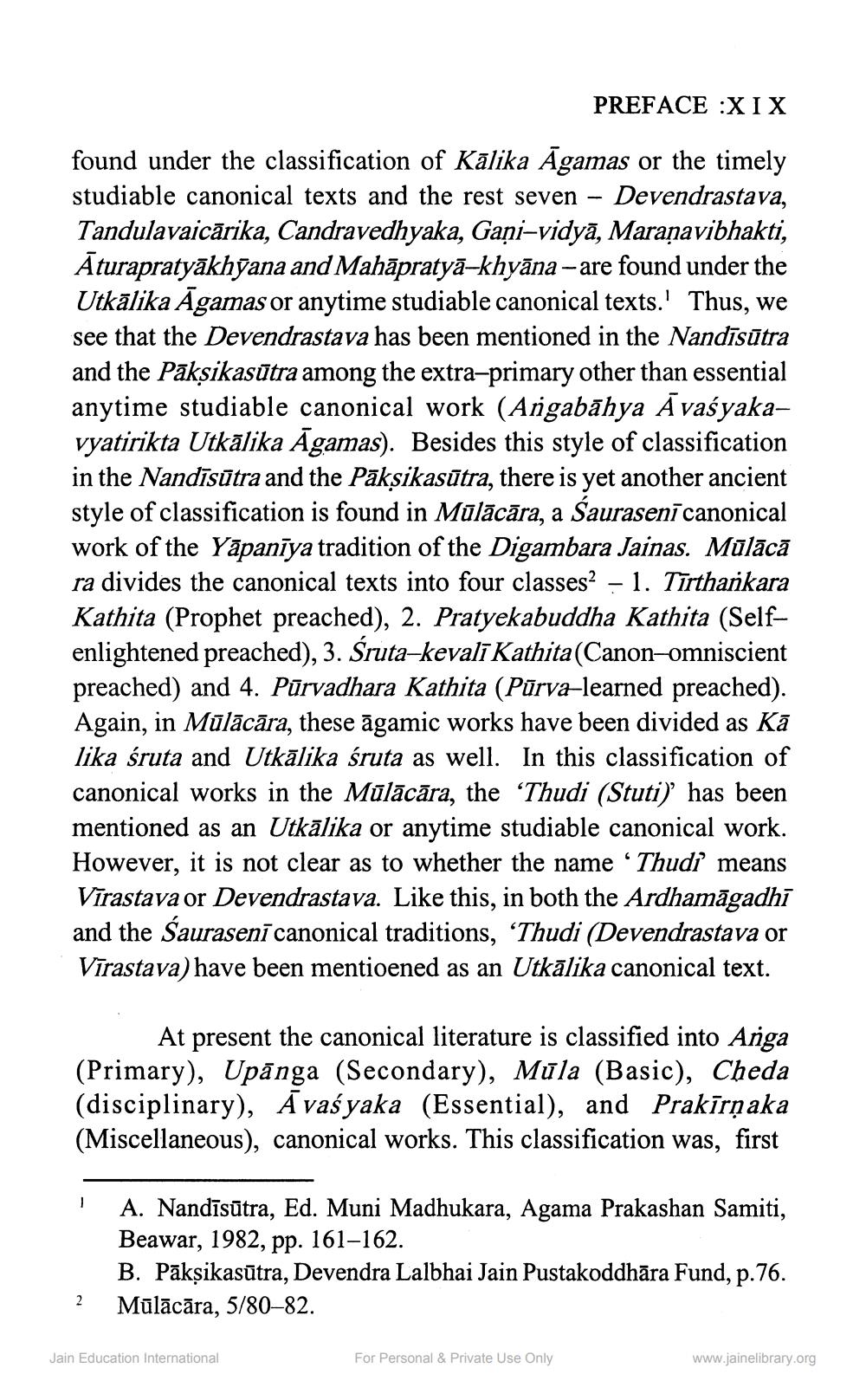________________
PREFACE :XIX found under the classification of Kālika Āgamas or the timely studiable canonical texts and the rest seven - Devendrastava, Tandulavaicārika, Candravedhyaka, Gani-vidyā, Maranavibhakti, Āturapratyākhyana and Mahāpratyā-khyāna -are found under the Utkālika Āgamas or anytime studiable canonical texts.' Thus, we see that the Devendrastava has been mentioned in the Nandīsūtra and the Pāksikasūtra among the extra-primary other than essential anytime studiable canonical work (Angabāhya Āvasyakavyatirikta Utkālika Āgamas). Besides this style of classification in the Nandīsūtra and the Pāksikasūtra, there is yet another ancient style of classification is found in Mülācāra, a sauraseni canonical work of the Yāpanīya tradition of the Digambara Jainas. Mūlācā ra divides the canonical texts into four classes” – 1. Tīrtharkara Kathita (Prophet preached), 2. Pratyekabuddha Kathita (Selfenlightened preached), 3. Śruta-kevalī Kathita(Canon-omniscient preached) and 4. Pārvadhara Kathita (Pūrva-learned preached). Again, in Mūlācāra, these āgamic works have been divided as Kā lika śruta and Utkālika śruta as well. In this classification of canonical works in the Mūlācāra, the 'Thudi (Stuti) has been mentioned as an Utkālika or anytime studiable canonical work. However, it is not clear as to whether the name ‘Thudi means Vīrastava or Devendrastava. Like this, in both the Ardhamāgadhi and the Sauraseni canonical traditions, ‘Thudi (Devendrastava or Vīrastava) have been mentioened as an Utkālika canonical text.
At present the canonical literature is classified into Anga (Primary), Upānga (Secondary), Mūla (Basic), Cheda (disciplinary), Āvaśyaka (Essential), and Prakīrņaka (Miscellaneous), canonical works. This classification was, first
1
A. Nandīsūtra, Ed. Muni Madhukara, Agama Prakashan Samiti, Beawar, 1982, pp. 161-162. B. Pākṣikasūtra, Devendra Lalbhai Jain Pustakoddhāra Fund, p.76. Mūlācāra, 5/80–82.
2
Jain Education International
For Personal & Private Use Only
www.jainelibrary.org




